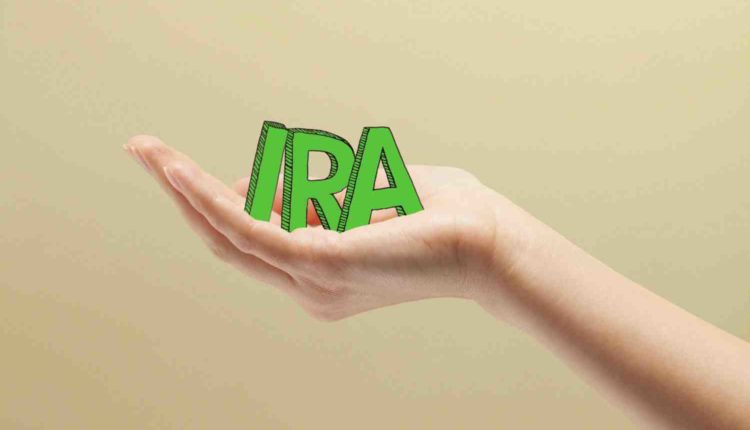No investment is completely safe, but there are five (bank savings accounts, CDs, government bonds, money market accounts, and annuities) that are considered to be the safest investments you can own. Bank savings accounts and CDs are usually FDIC insured. Government bonds are government-backed debt securities.
Contents
What is the 4% rule?
The 4% rule says that you should be able to comfortably live on 4% of your money in investments in your first year of retirement, and then increase or decrease this amount slightly in each subsequent year to take inflation into account. To see also : Why a Roth IRA is a bad idea?.
Is the 4% rule out of date? Not only is the four percent rule out of date, it also doesn’t take into account changing market conditions. It’s important to remember that following these rules doesn’t guarantee you won’t run out of money. In addition, the rule was developed when bond rates were much higher than they are today.
How do I calculate the 4% rule?
The 4% Rule The approach is simple: you decrease 4% of your savings in the first year, and the same dollar amount plus an inflation adjustment every year in a row. This may interest you : Dividend Stock Purchase: Lanny's July 2021 Summary – Seeking Alpha.
How long will $500000 last retirement?
How long will $ 500,000 last in retirement? If you’ve saved $ 500,000 for retirement and are withdrawing $ 20,000 a year, it will likely take 25 years. Of course, it will last longer if you expect an annual return on your money or withdraw fewer annual withdrawals.
What is the formula for early retirement?
| Year of birth | Credit per year |
|---|---|
| 1943 and later | 8.0% |
Does 4 rule include taxes?
The 4 percent rule assumes no tax burden, as if all of your assets were held in a Roth IRA, where taxes will never be payable again. The reality is that income tax is due on all tax-privileged account withdrawals and dividend and capital gains taxes are also owed on taxable accounts every year.
What does the 4% rule mean?
A common rule of thumb for retirement planning is the 4% rule. It’s relatively simple: you add up all of your investments and get 4% of them in the first year of retirement. See the article : ViacomCBS Acquiring Latin American Broadcaster Chilevision From AT&T – Nasdaq. … you would withdraw $ 40,000 in the first year of your retirement.
Is 4% a safe withdrawal rate?
Sustainable Payout Ratio is the estimated percentage of savings that you can draw without running out of money each year during retirement. As a rule of thumb, you should not withdraw more than 4% to 5% of your savings in the first year of retirement and then adjust this amount for inflation every year.
What is the 4% rule how much money do I need to retire?
4% rule of thumb vs. the 25X rule says that if you save 25 times your desired annual retirement salary, you can withdraw 4% of that amount every year and it will take 30 years.
What is the 4% rule how much money do I need to retire?
4% rule of thumb vs. the 25X rule says that if you save 25 times your desired annual retirement salary, you can withdraw 4% of that amount every year and it will take 30 years.
How much do I need for the 4% rule?
A common rule of thumb for retirement planning is the 4% rule. It’s relatively simple: you add up all of your investments and get 4% of them in the first year of retirement. In the years that follow, you adjust the amount of dollars you withdraw for inflation.
How long will my money last using the 4 rule?
How long will my money last according to the 4% rule? The four percent rule is intended to ensure that your retirement provision lasts for 30 years (or more).
How much money do you need to retire with $100000 a year income?
Most experts say your retirement income should be around 80% of your final annual earnings before retirement. 1 That is, if you make $ 100,000 a year in retirement, you will need at least $ 80,000 a year to have a comfortable life after retiring.
What is the tax advantage of an IRA?
The contributions you make to a traditional IRA account may qualify you for a tax deduction each year. Traditional individual retirement accounts, or IRAs, are tax deferred, which means you don’t have to pay tax on interest or other profits the account makes until you withdraw the funds.
How much will an IRA cut my taxes in 2020? Traditional IRA contributions can save you a decent amount of money on your taxes. For example, if you are in the 32% income tax bracket, contributing $ 6,000 to an IRA would reduce your tax bill by $ 1,920.
What is the tax advantage of a traditional IRA?
With a traditional IRA, contributions are tax deferred until payouts begin. If you make $ 65,000 a year and invest $ 5,000 in a traditional IRA, you can deduct the contribution from your income tax. If so, your taxable income will be $ 60,000, which could potentially lower your tax bracket.
What are the advantages and disadvantages of a traditional IRA?
| advantages | disadvantage |
|---|---|
| Tax deferred growth | Lower contribution limits |
| Everyone can contribute | Prepayment penalties |
| Tax protected growth | Limited forms of investment |
| Bankruptcy protection | Adjusted Gross Income (AGI) limit |
Why does a traditional IRA have the best tax advantages?
The main benefits of a traditional IRA are tax deduction on contributions, compounding of tax-deferred investments, and the ability to invest in virtually any stock, bond, or mutual fund you want.
How much will a traditional IRA reduce my taxes?
Contribute to an IRA. You can defer paying income tax up to $ 6,000, which you can deposit into an individual retirement account. An employee in the 24% tax bracket who maxes out this account will reduce their federal income tax bill by $ 1,440. Income tax is not due until the money is withdrawn from the account.
Is an IRA a good tax deduction?
Yes, IRA contributions are tax deductible – if you qualify for them. To be clear, we are talking about contributions to a traditional IRA. Contributions to a Roth IRA are not tax deductible.
Is putting money in an IRA a good idea?
Individual Retirement Accounts (IRAs) are a fantastic way for investors to save on taxes. Pay for your future self by investing in an IRA and you can cut your income tax bill too. However, savvy annuity investors know of an even better strategy for minimizing their taxes: use a Roth IRA.
Why IRAS are a bad idea?
One of the disadvantages of the traditional IRA is the early withdrawal penalty. With a few key exceptions (such as college fees and first time home purchases), you will be fined 10% if you cancel your IRA before the age of 59½. This is in addition to the income taxes that you also owe.
What are the disadvantages of an IRA?
Disadvantages of an IRA rollover
- Risks to the protection of creditors. You can have credit and bankruptcy protection by leaving funds in a 401k as protection from creditors under IRA rules varies by state.
- Credit options are not available. …
- Minimum distribution requirements. …
- More fees. …
- Withdrawal tax rules.
Can you lose all your money in an IRA?
Understanding IRAs An IRA is a type of tax-deferred investment account that can help individuals plan and save for retirement. IRAs allow a wide range of investments, but, as with any volatile investment, individuals can lose money on an IRA if their investments are adversely affected by market highs and lows.
Are IRAs a good idea?
Individual Retirement Accounts (IRAs) are a fantastic way for investors to save on taxes. Pay for your future self by investing in an IRA and you can cut your income tax bill too. However, savvy annuity investors know of an even better strategy for minimizing their taxes: use a Roth IRA.
What is the average return on a IRA?
However, Roth IRA accounts have historically achieved between 7% and 10% average annual returns. Let’s say you open a Roth IRA and contribute the maximum amount each year. If the contribution limit for those under 50 is still $ 6,000 per year, after 10 years you would accumulate $ 83,095 (assuming a 7% interest rate).
Can you lose all your money in an IRA? Understanding IRAs An IRA is a type of tax-deferred investment account that can help individuals plan and save for retirement. IRAs allow a wide range of investments, but, as with any volatile investment, individuals can lose money on an IRA if their investments are adversely affected by market highs and lows.
What is an average traditional IRA return?
Average Return on Traditional IRAs According to Standard & Poor’s 500® (S&P), the average percentage that an IRA grows each year is “10.8 percent”. This rate is based on data collected from January 1, 1971 through December 31, 2020.
How much does an IRA make a year?
Typically, Roth IRAs see average annual returns of 7-10%. For example, if you are under 50 and have just opened a Roth IRA, $ 6,000 in contributions at 7% interest would amass $ 83,095 each year for 10 years.
How much will an IRA be worth in 20 years?
Calculator Results Save $ 148,268.75 over 20 years. If you are in a 28,000% tax bracket when you retire, it will be worth $ 106,753.50 after tax is paid. If you or your spouse retire before the age of 60, there is a 10% penalty. The penalty-adjusted savings amount would be $ 91,926.63.
What is the average interest rate for traditional IRA?
Discover Bank: 0.20% – 1.00% APY, 3 months – 10 years, $ 2,500 minimum to open. Connexus Credit Union: 0.61% – 1.21% APY, 1 – 5 years, USD 5,000 minimum at opening. Synchrony Bank: 0.15% – 0.85% APY, 3 months – 5 years, $ 2,000 minimum to open. Ally Bank: 0.15% – 0.80% APY, 3 months – 5 years, no minimum opening time.
How much does an IRA earn per year?
Typically, Roth IRAs see average annual returns of 7-10%. For example, if you are under 50 and have just opened a Roth IRA, $ 6,000 in contributions at 7% interest would amass $ 83,095 each year for 10 years. Wait another 30 years and the account will grow to over $ 500,000.
Can you lose money in an IRA?
Yes, you can lose money in a Roth IRA. The most common causes of a loss are: negative market fluctuations, early repayment penalties and too little time for compounding. The good news is, the more time you give a Roth IRA to grow, the less likely you are to lose money.
What is the average return on a traditional IRA?
Average Return on Traditional IRAs Traditional IRAs earn interest, but the rate varies widely. According to Standard & Poor’s 500® (S&P), the average annual growth of an IRA is “10.8 percent”.
Does a traditional IRA earn interest?
The nice thing about owning an IRA – whether it’s a traditional IRA or a Roth IRA – is that the money grows tax-free while it’s in your account. And any income your investments generate each year will grow by the power of compound interest. … There is no IRA rate.
How much will an IRA be worth in 20 years?
Calculator Results Save $ 148,268.75 over 20 years. If you are in a 28,000% tax bracket when you retire, it will be worth $ 106,753.50 after tax is paid. If you or your spouse retire before the age of 60, there is a 10% penalty. The penalty-adjusted savings amount would be $ 91,926.63.
How much will an IRA grow in 30 years?
For example, if you invested $ 6,000 per year in a stock index fund with an average return of 10% for 30 years, your account could grow to over $ 1 million (but be aware of the impact of investment fees).
How much should my IRA grow each year?
Historically, with a properly diversified portfolio, an investor can expect between 7% and 10% average annual returns. Time horizon, risk tolerance, and the overall mix are all important factors to consider when forecasting growth.
Can IRA make you rich?
It is possible to hit the million dollar mark if you start early, deposit consistently, and invest in quality assets. For example, if you made a commitment to donate $ 6,000 each year to a Roth IRA for 40 years, you could turn $ 240,000 into more than $ 1 million.



